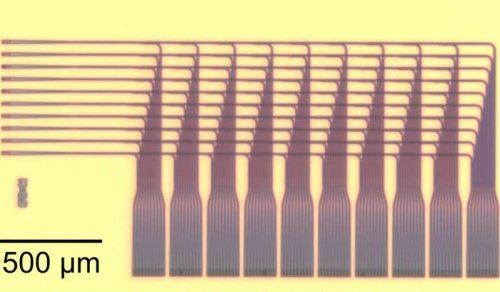The first samples of optical artificial neural networks have been created
Researchers from the American National Institute of Standards and Technology (NIST) have created the first-of-its-kind silicon chip containing an artificial neural network that works on the principles of human brain functioning. But the main difference between the new chip and other similar chips is that instead of electrical signals it uses optical signals, which in turn allows the neural network to function literally at the speed of light.
Neural networks of various types are already used to solve very complex problems, such as recognizing sounds, objects on images, analyzing input streams, etc. However, the performance of neural networks is limited by the performance of the electronic components used, transistors, in this case. Using light as a media allows you to circumvent these restrictions.
The developers of the optical neural network managed to successfully solve the main problem associated with the use of light signals. The solution to this problem was two layers of photo wave guides superimposed on each other, structures that allow light to pass only through thin channels directed to optical logical elements. These wave guides are analogous to the electrical conductors through which electrical signals are propagated in traditional semiconductor chips.
The existing structure of two layers of wave guides can be easily supplemented and expanded with additional layers, which will create more complex neural networks with enhanced functionality. Now two layers of wave guides form an optical network with 10 inputs, each of which is able to receive a separate flow of data, while each entry ends with an optical analogue of a neuron, the total number of which is one hundred. The input processing results are fed outwards through 10 output ports, also associated with individual optical neurons.

The wave guides mounted on a silicon substrate are made of silicon nitride and are 800 nanometers wide and 400 nanometers thick. The software developed by the researchers allows to make automatic direction of signals on the necessary paths in the diagram and adjustment of the levels of relationships between individual neurons.
The appropriately modulated laser light is fed into the chip through optical fiber. Also, through the optical fiber from the chip extracted the results of its work. To test the performance of the optical neural network, the researchers used special sensors and fast-acting converters to digitally transform input and output optical signals into digital form. This method, which has a fairly high accuracy, showed that the optical neural network produces homogeneous results that contain very few errors.
“By creating a new chip, we implemented two things at once,” the researchers write, “We used the third spatial dimension to realize the possibility of optical connection of individual nodes and developed a new measurement technique that allows us to quickly and accurately obtain the characteristics of the photon computing system. These two things are of great importance as we begin to approach the moment of creation of the first large-scale optoelectronic neuromorphic computing systems
.Source www.dailytechinfo.org